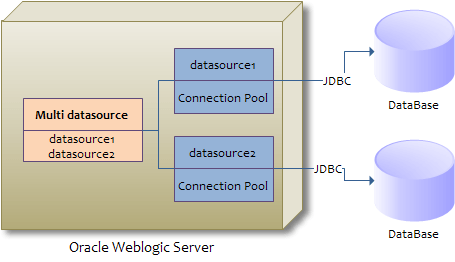Today, the uninterrupted operation of an infrastructure is more important than the establishment of it.
How can we tolerate an outage on a Weblogic application server where we run critical applications? Or what measures can we take to prevent this from happening?
For example, consider an architecture where online transactions are made, you receive payment and you earn a profit from each payment received.
Consider what a 1 hour interruption will cost you. Think of it spiritually, not financially.
How safe can a structure be that has been interrupted? Weblogic offers you the “Multi DataSource” service in this regard.
With Weblogic “Multi DataSource”, minimum 2 data sources defined under it protect you from interruptions that may occur with both load balancing and backup capabilities.
Thanks to this capability, you can determine your workflow (Failover & Load Balancing) according to the scenario you choose.
Scenario 1 (Failover): As the name suggests, it checks the survivability of the data sources you add and connects with other sources in the order of your additions in case of interruptions.
In other words, it tries what you add first and the last one you add last.
Scenario 2 ( Load Balancing ): If you are working with services that make excessive effort, it will load balance between the data sources you add.
In other words, if there are 5 different data sources, you can distribute the incoming connections equally to them.
Finally, to examine with an example;

The Multi Datasource operation in the above scenario works on failover. It is prepared to continue from one link if it goes away.
![]()
 Database Tutorials MSSQL, Oracle, PostgreSQL, MySQL, MariaDB, DB2, Sybase, Teradata, Big Data, NOSQL, MongoDB, Couchbase, Cassandra, Windows, Linux
Database Tutorials MSSQL, Oracle, PostgreSQL, MySQL, MariaDB, DB2, Sybase, Teradata, Big Data, NOSQL, MongoDB, Couchbase, Cassandra, Windows, Linux 